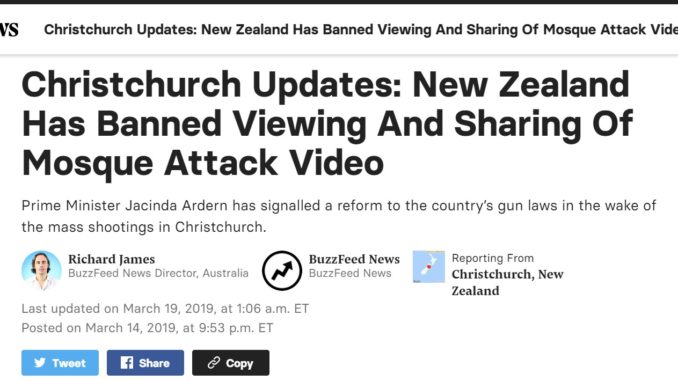
ABC NEWS and BuzzFeedNews
An online news media site like Buzzfeed’s news site uses the online platform much more innovatively than a legacy news media like the Australian Broadcasting Corporation’s ABC News site. This is effectively a product of how each site appeals to their varied audiences which is highlighted when comparing two articles of the same topic from each of the sites.
Both ABC News and Buzzfeed News have similar forms of journalistic writing and content. However, where ABC News have only really considered a change in technical delivery, Buzzfeed News has adapted to a mobile international audience through an innovative online delivery.
The Sites
ABC is a national news platform, spanning broadcasting across many different platforms such as radio and television as well as their online platform. With the latest annual report from 2017, the ABC provides a great insight into their audience by their response metrics. The annual report of 2017 found that most of their online traffic is visits from desktops, people with both the means to own a desktop device and the time to use it are semi-retired to retired people.
This idea is corroborated by a Nielson report which found that of all people consuming news on time more than half were people aged fifty years and over. The same data also counted that for all the time that Australians spend access news stories, 49% of their access is through a desktop device.
This perhaps sheds a better light on why the webpage of the ABC article is so busy. ABC knows that its audience is largely viewing their articles on desktops, so they choose to expose their audience to more of their own related content increasing site wide visit and interaction.
Alternatively, Buzzfeed News is an international online born platform, a small part of the greater Buzzfeed site. Most of its traffic originates from the US, however it does get a smaller amount of traffic from the rest of the globe.
Buzzfeed is also spread out across social media with its largest following coming from Facebook, which explains why the article doesn’t have an internal comment section but instead providing the audience the option to comment using their Facebook accounts. The device of choice in accessing Buzzfeed is in fact the opposite to ABC with Thalamus indicating that mobile display of Buzzfeed is almost triple its numbers for desktop, with an even favouring of usage between App and the mobile website.
From this we can draw similar conclusions with the opposite affects to the site page for the article, visitors are more than likely accessing sites from mobile devices with much smaller screens. To optimise their site for such viewers, the articles page is noticeably much sparser than that of the ABC. It also has an interesting addition in terms of online delivery, it has an image of a map.

Positioned just below the headline and lead with the by-line, to indicate where the article is reported from. This is a self-aware addition for a site that has an international presence.
Both articles are devoid of advertisement. ABC News doesn’t make money from advertising therefore articles don’t have advertisements anyway. Though Buzzfeed avoids advertising in this article consciously as other articles do include advertisements. Which is a very astute choice considering the subject of the article it would be incredibly insensitive to be seen making profit from such an event.
Writing Analysis
In terms of the overall content, both articles are extremely dynamic, they both make full use of their online medium with these articles. They both have efficient leads relative to their headlines. Though ABC’s is slightly repetitious, it does include some new information and the site does make some use of technical delivery components like alternating the colour of texts for subheadings and links.
Both articles have effectively the same form of content, both consist of constant updates and a summary of dot points. The style of adding to the list of dot points is perfectly applied for a constantly developing news situation with ramifications beyond the tragic events of the Christchurch Shootings.
There are no paragraphs to space out, and all the information is delivered immediately as both dot point lists are quite brief, especially the ABC article which is framed and fits on a single print screen without having to scroll. Each dot point for both articles is no more than a sentence long.
The wording is clear and concise which is conducive to journalistic writing as it conveys each update succinctly. Buzzfeed takes this a step further by updating the article till the 19th unlike ABC that only covers the day of the events.

Social media sharing icons are the same but there is a key difference in the third icon which speaks to the origins of the separate news sites.
Buzzfeed an internet born news site offers a button to open an added window on top of the article with the shareable link, ABC however offers an icon for the option to print. This print option is highly redundant and unnecessary in terms of functionality, it renders every interactive option of the article ineffective and defeating the purpose of the platform.
Another obvious difference between the two is the way the two articles execute their hypertextuality. The ABC article features only two extensively long hyperlinked phrases.
‘ the ABC confirmed the identity of the man in the video as Grafton man Brenton Tarrant ‘
This is not a particularly effective use of hyperlinking and can hinder what Bradshaw calls the ‘scannability’ of the article. Unlike the Buzzfeed News article which keeps hyperlinks extremely short, limiting them to if not very few, just a singular word.
ABC is also inclined to lean more on intertextuality, linking back to its own articles for sources instead of outwardly to the wider internet. This does less for the article’s credibility if all the sources are just information being recycled through a single source, instead of multiple outlets like the links in the Buzzfeed article lead to.
Online Delivery
The Buzzfeed article makes full use of visual media, it incorporates both a feature picture as well as a map. Though for the article to be fully functional the map would have been better if the map was interactive perhaps allowing the audience to follow the route of events.
Despite this it is still useful as it gives a wide view of the scenes of terror laid out across Christchurch highlights the scope of distance and how much of the city was affected. With fairness, in line with an unfolding situation such information is often restricted.
Only the Buzzfeed News article has a feature image. It is of two women embracing, one dressed in a hijab and the other possibly a first responder, wearing the uniform of an ambulance officer.
The picture focusing on the woman in the headscarf, obviously upset makes her and her grief the subject. With someone who, aside from the uniform she is wearing, is quite ambiguous providing the other woman with support and comfort.
This is quite effective and another subtle way to respond positively to the sensitive subject matter of the article. in response to the events of the article.
Buzzfeed news is clearly very aware other technical components of delivery relative to their article layout. The fixed banner ticker is an innovative function unique to the Buzzfeed News article.

Sliding with the article as the reader scrolls giving the reader a constant succinct reminder of what the latest update of the article is, as well as a constant offering to share the article. It’s a point of convenience for the reader, if they read something of interest they can immediately share without having to scroll around or lose their place of reading.
The article itself is centred in the middle of the page, without extra intertextual additions on the sides, the article is without distraction. In conjunction with a lack of advertising it makes the article the singular focus of the audience, subtly emphasising the gravity, severity and singular importance of the events and their delivery.
Despite a lack of innovation on the part of ABC News, this does not necessarily mean that the article isn’t ineffective in presenting the information for its own audience. Ultimately, Buzzfeed News does have a much more fundamentally successful approach to an online article making the more successful use of the platform but again is just reflective of the audience the site is appealing to.
Reference List
ABC News. Christchurch shootings leave 50 dead after attack on Mosques, as it happened. (15th March 2019) abc.net
Retrieved From https://www.abc.net.au/news/2019-03-15/christchurch-shooting-multiple-fatalities-mosque-new-zealand/10904416
Australian Broadcasting Corporation. Investing in Audiences Annual Report, Audience Metrics. (2017).
Retrieved from http://www.abc.net.au/corp/annual-report/2017/audience-metrics.html
Alexa. Buzzfeednews.com Traffic Statistics (2019)
Retrieved from https://www.alexa.com/siteinfo/buzzfeednews.com
Bradshaw, Paul. (2018). The Online Journalism Handbook, Skills to Survive and Thrive in the Digital Age, 2nd Edition. New York, Routledge.
James, Richard. Christchurch Updates. (19th March 2019) BuzzFeedNews.com.
Retrieved From https://www.buzzfeednews.com/article/richardhjames/new-zealand-christchurch-mosque-shooting-terror-attack
Nielson. Australians aged 50+ spend most time online with news-desktop remains device of choice. (2018)
Retrieved from https://www.nielsen.com/au/en/press-room/2018/australians-time-spent-digital-audiences-new-rankings.html
Thalamus. Advertising Vendor Database, Buzzfeed Profile. (2019)
Retrieved from https://www.thalamus.co/ad_partners/buzzfeed





Be the first to comment